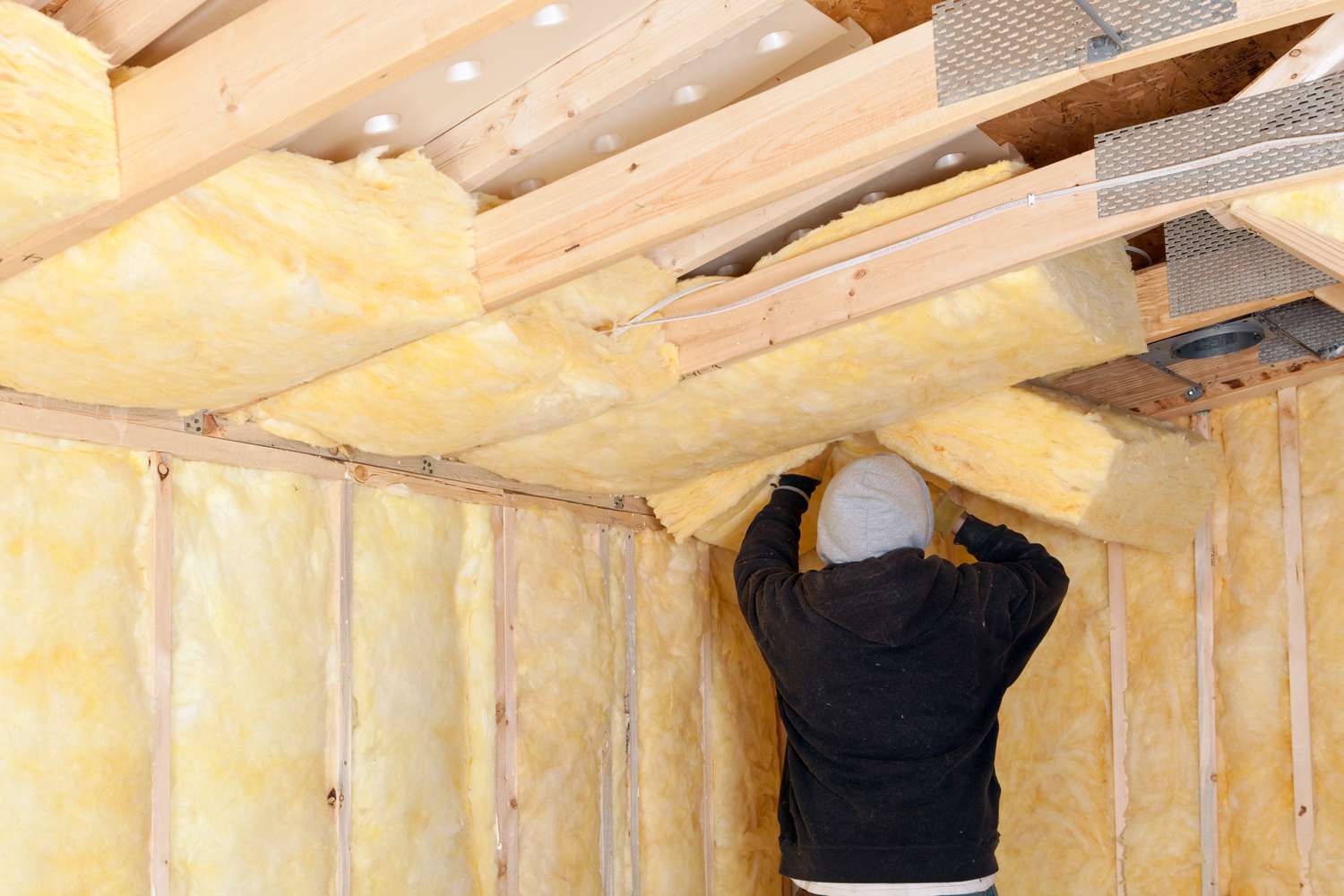

Articles
How To Properly Lower Curtains
Modified: October 20, 2024
Learn how to make curtains go down with these helpful articles. Find step-by-step guides and tips to achieve the perfect window treatment.
(Many of the links in this article redirect to a specific reviewed product. Your purchase of these products through affiliate links helps to generate commission for Storables.com, at no extra cost. Learn more)
Introduction
When it comes to enhancing the aesthetic appeal of your home, curtains play a crucial role. They not only provide privacy and control light, but they also add warmth and style to any room. However, the key to achieving the perfect look lies in knowing how to properly make curtains go down.
In this comprehensive guide, we will take you through the step-by-step process of making curtains that will beautifully complement your interior design. From choosing the right fabric to hanging and adjusting the curtains, we’ve got you covered!
So, let’s dive into the world of curtains and discover how to create stunning window treatments that will transform your living space.
Key Takeaways:
- Elevate your space with custom curtains that provide privacy, light control, and style. Master the art of curtain-making, from choosing the right fabric to hanging and adjusting for a perfect fit.
- Embrace creativity and personalize your curtain design to reflect your unique style. Enjoy the process of making curtains and let them transform your home into a stylish and cozy sanctuary.
Types of Curtains
Before you begin the process of making curtains, it’s important to first decide on the type of curtains that will best suit your needs and style preferences. Here are some popular types of curtains to consider:
- 1. Panel Curtains: Panel curtains are versatile and simple, consisting of a single piece of fabric that hangs vertically from a rod. They can be made with various lengths and widths to accommodate different window sizes.
- 2. Sheer Curtains: Sheer curtains are translucent and lightweight, allowing natural light to filter into the room while still providing privacy. They often come in light and flowy fabrics like chiffon or voile.
- 3. Blackout Curtains: As the name suggests, blackout curtains are designed to block out external light, making them perfect for bedrooms or rooms where you prefer complete darkness. They are made with thick, opaque fabrics that effectively prevent light from entering the room.
- 4. Pleated Curtains: Pleated curtains have folds or pleats at the top, giving them a sophisticated and tailored appearance. They can be created with various pleat styles, such as pinch pleats, goblet pleats, or pencil pleats, to achieve different looks.
- 5. Valances: Valances are decorative fabric panels that are typically placed at the top of windows to add a finishing touch to the curtains. They can be made with various styles, such as swags, cornices, or scarf valances.
- 6. Cafe Curtains: Cafe curtains cover only a portion of the window and are often used in kitchens or bathrooms to provide privacy while still allowing natural light to enter. They usually consist of two panels that can be adjusted separately.
These are just a few of the many types of curtains available. Consider the purpose and style of your space, as well as your personal preference, when choosing the type that best suits your needs.
Measuring and Choosing the Right Fabric
Before you start making your curtains, it’s crucial to measure your windows accurately to ensure a proper fit. Here’s a step-by-step guide:
- Begin by measuring the width of your window. Measure the width of the window frame or the area you want the curtains to cover. For a more full and luxurious look, add a few extra inches to the width.
- Next, measure the length of the window. Decide where you want the curtains to hang – either just below the window sill or all the way to the floor. Measure from the desired starting point to the desired ending point and add a few inches for hems and headers.
- Consider the curtain style you’ve chosen. Depending on the style, you might need to measure additional dimensions, such as the length of the header or the drop of the pleats.
Once you have accurate measurements, it’s time to choose the right fabric for your curtains. Here are a few factors to consider:
- 1. Light Control: Determine the amount of light you want to filter through your curtains. Sheer or lightweight fabrics allow more natural light to enter, while thicker fabrics offer more privacy and light control.
- 2. Privacy: Consider the level of privacy you desire. If you live in a busy area or have close neighbors, you may want to choose a fabric with a higher opacity.
- 3. Style and Aesthetics: Think about the overall look you want to achieve in your space. Select a fabric that complements your interior design and enhances the ambiance of the room.
- 4. Maintenance: Consider the care instructions for different fabric options. Some fabrics are machine-washable, while others require dry cleaning or gentle hand washing.
Additionally, don’t forget to consider the durability and lifespan of the fabric. Curtains can be a long-term investment, so choosing a high-quality fabric that will maintain its color and texture over time is important.
Once you’ve determined the desired characteristics of your fabric, visit a fabric store or explore online options to find the perfect material for your curtains. Consider factors like texture, pattern, and color to find a fabric that aligns with your vision.
Cutting and Sewing the Panels
After measuring your windows and selecting the right fabric, it’s time to start cutting and sewing the panels for your curtains. Here’s a step-by-step guide to help you through the process:
- 1. Measure and mark: Use your measurements to mark the desired width and length of each panel on the fabric. Use a ruler and fabric chalk or pins to ensure accurate markings.
- 2. Cut the fabric: Using sharp fabric scissors, carefully cut along the marked lines to create the individual panels. Ensure a straight and clean cut for a professional finish.
- 3. Prepare the sides: To prevent fraying, fold and press a small portion of each side of the panel on the wrong side. Then fold and press again, creating a double-fold hem. Use straight pins to secure the hem in place.
- 4. Sew the sides: Using a sewing machine or a needle and thread, stitch along the folded edge of each side hem. Use a straight stitch or a zigzag stitch for added durability.
- 5. Create the header: Measure and mark the desired height of the header at the top of each panel. Fold and press a small portion of the fabric on the wrong side to create a double-fold header hem. Secure it with straight pins.
- 6. Sew the header: Sew along the folded edge of the header hem, leaving a small opening on each end of the panel. This opening will allow you to slide the curtain rod through the header later on. Backstitch at the beginning and end of the seam to reinforce it.
Remember to customize the sewing techniques based on the fabric you’re working with. Delicate fabrics may require a lighter touch, while heavier fabrics may need to be sewn with reinforced stitches.
Once you’ve sewn the panels, press them with an iron to remove any wrinkles and creases. You’re now ready to move on to the next step: adding a header and bottom hem.
Adding a Header and Bottom Hem
After cutting and sewing the panels for your curtains, the next step is to add a header and bottom hem. These finishing touches will enhance the overall look and functionality of your curtains. Here’s how you can do it:
- 1. Adding a Header:
- Measure the width of your curtain rod. Add a few extra inches to allow for a comfortable fit.
- Fold and press the top of the curtain panel on the wrong side to create a double-fold header. Make sure the header is wide enough to accommodate the curtain rod.
- Secure the header with straight pins to hold it in place.
- Using a sewing machine or needle and thread, stitch along the folded edge of the header to create a neat and secure seam. Backstitch at the beginning and end of the seam.
- 2. Adding a Bottom Hem:
- Measure the desired length of the curtain panel from the bottom.
- Fold and press the bottom edge of the panel on the wrong side to create a double-fold hem. The width of the hem can vary depending on your preference, but 1-2 inches is typically recommended.
- Secure the hem with straight pins to hold it in place.
- Sew along the folded edge of the bottom hem to create a clean finish. Backstitch at the beginning and end of the seam.
Remember to press the header and bottom hem with an iron after sewing to give your curtains a polished look. The header will allow you to easily slide the curtain rod through, while the bottom hem will provide weight and stability to the panels.
Now that you’ve added the header and bottom hem, it’s time to move on to the next step: attaching the curtain rings or creating a rod pocket.
To make curtains go down, simply pull the cord or chain in the direction that lowers the curtains. If they are not moving, check for any obstructions or tangles in the mechanism. If the curtains are still not going down, consider seeking professional assistance to avoid damaging the mechanism.
Read more: How To Lower A Ceiling
Attaching the Curtain Rings or Creating a Rod Pocket
Once you have added the header and bottom hem to your curtains, the next step is to determine how you will hang them. There are two common methods: using curtain rings with clips or creating a rod pocket. Here’s how you can accomplish each:
- 1. Attaching Curtain Rings:
- Measure the distance between the bottom of the header and the desired length for your curtains. This will determine the placement of the curtain rings.
- Attach curtain rings evenly across the header, ensuring that they are spaced out and aligned with the measurement you made in the previous step.
- Insert the curtain rod through the rings, ensuring they glide smoothly. Adjust the position of the rings as needed to achieve an even and symmetrical look.
- Clip the top portion of each curtain panel to the rings, ensuring they are securely held in place. This method allows for easy adjustment and removal of the curtains.
- 2. Creating a Rod Pocket:
- Measure the diameter of your curtain rod, as well as the distance between the bottom of the header and the desired length for your curtains.
- Create a double-fold hem at the top of the curtain panel, folding the fabric towards the wrong side to create a pocket wide enough to accommodate the rod.
- Secure the hem with straight pins, ensuring it is evenly folded and symmetrical.
- Stitch along the folded edge of the pocket, leaving enough space at each end for the rod to be inserted.
- Once the rod pocket is stitched, insert the curtain rod through the pocket, ensuring it glides smoothly. Adjust the positioning of the curtain panel on the rod as needed.
Both methods provide a secure and aesthetically pleasing way to hang your curtains. The choice between curtain rings and a rod pocket depends on your personal preference and the style you wish to achieve.
Now that your curtains are properly attached to the curtain rod, it’s time to move on to installing the curtain rods in your desired location.
Installing Curtain Rods
Installing curtain rods is an important step in ensuring that your curtains hang properly and securely. Here’s a step-by-step guide to help you install your curtain rods:
- 1. Gather your tools:
- Measure the width of your window, and determine the desired placement of the curtain rod.
- Based on your measurements, purchase a curtain rod of the appropriate length and style, as well as any necessary mounting brackets and screws.
- Gather a measuring tape, a level, and a power drill or screwdriver.
- 2. Determine the placement:
- Using a measuring tape, measure the desired distance from the top of the window frame to the placement of the curtain rod.
- Mark these measurements on both sides of the window frame, ensuring that the marks are level.
- 3. Install the mounting brackets:
- Hold one of the mounting brackets against the marked spot on the wall or window frame, making sure it is level.
- Using a power drill or screwdriver, insert the screws provided with the mounting brackets to secure them in place. Repeat this step for the other side of the window.
- 4. Attach the curtain rod:
- Depending on the style of your curtain rod, place it onto the installed brackets.
- If your curtain rod requires additional support, secure it to the brackets according to the manufacturer’s instructions.
- 5. Test and adjust:
- Ensure that the curtain rod is level and securely attached to the mounting brackets.
- Gently test the rod by sliding the curtains back and forth to ensure they move smoothly.
- If necessary, make any adjustments to the position or tightness of the brackets to ensure optimal functionality.
Once the curtain rod is properly installed, you are ready to hang and adjust your curtains to achieve the desired look and fit.
Remember to follow the manufacturer’s instructions for your specific curtain rod and mounting brackets, as installation methods may vary. Safety is always a priority, so ensure that the curtain rod and brackets are securely installed.
Now that your curtain rods are in place, it’s time to move on to the final step: hanging and adjusting your curtains.
Hanging and Adjusting the Curtains
Now that your curtain rods are installed, it’s time to hang and adjust your curtains for the perfect fit and look. Follow these steps to hang and adjust your curtains:
- 1. Gather your curtains:
- Make sure your curtains are clean and wrinkle-free before hanging them.
- If you are using curtain rings, ensure that each curtain panel is clipped securely onto the rings.
- 2. Hang the curtains:
- If you are using curtain rings, slide each ring onto the curtain rod, spacing them out evenly.
- If you have created rod pockets, carefully slide the curtain rod through the pockets at the top of each curtain panel.
- 3. Adjust the length:
- Stand back and evaluate the length of your curtains. If they are too long, you may need to adjust the length by hemming or folding them up.
- For a floor-length look, ensure that the curtains hover just above the floor without dragging or bunching up.
- If you prefer a pooling effect, where the curtains gather slightly on the floor, allow for some extra length when measuring and adjusting.
- 4. Achieve an even look:
- Step back and examine the curtains to ensure they are hung evenly. Make any necessary adjustments to ensure the panels are level and symmetrical.
- If your curtains have pleats or gather, adjust the spacing of the pleats or folds to achieve a well-balanced and visually appealing appearance.
- 5. Check for functionality:
- Gently slide the curtains back and forth along the curtain rod to ensure they move smoothly without any obstructions.
- Ensure that the curtains fully cover the window when closed, providing privacy and blocking out light if desired.
Take your time in hanging and adjusting the curtains to achieve the desired look and functionality in your space. Remember that curtains can always be further adjusted as needed, so don’t hesitate to make any necessary changes for the perfect fit.
With your curtains successfully hung and adjusted, you can now step back and enjoy the beautiful transformation they bring to your room.
Now that you have completed the process of making, hanging, and adjusting your curtains, you can sit back and enjoy the enhanced beauty and functionality they bring to your space. Remember, the steps outlined in this guide serve as a general framework, and you can personalize and adapt them based on your preferences and specific curtain style. With your newly created curtains, you have the power to transform any space into a stylish and cozy sanctuary.
Conclusion
Congratulations! You have now learned how to make curtains that not only enhance the aesthetic appeal of your home but also provide privacy and light control. By following the step-by-step process outlined in this guide, you can create custom curtains that perfectly fit your windows and complement your interior design.
From measuring and choosing the right fabric to cutting, sewing, and adding finishing touches like headers and bottom hems, you’ve mastered the art of curtain-making. You’ve also learned how to attach curtain rings or create rod pockets, as well as install curtain rods for proper support.
Remember that making curtains is a creative process, and you have the flexibility to personalize your design choices. Be mindful of the overall style and ambiance you want to achieve in your space, and select fabrics, colors, and patterns that align with your vision.
Once your curtains are hung, take the time to adjust and perfect their length and appearance. The careful attention to detail will ensure they enhance the overall look and feel of your room.
Now that you have the knowledge and skills to create beautiful curtains, you can confidently tackle curtain-making projects throughout your home. Whether you’re adding curtains to your living room, bedroom, or any other space, you now have the power to elevate the style and create a cozy atmosphere.
Enjoy the process of making your curtains and the transformation they bring to your home. Embrace your creativity, enjoy the beautiful results, and let your curtains become a reflection of your personal style and taste.
Remember, with each curtain you create, you’re not only improving the aesthetic appeal of your space, but you’re also adding your unique touch to make it truly feel like home. Happy curtain-making!
Frequently Asked Questions about How To Properly Lower Curtains
Was this page helpful?
At Storables.com, we guarantee accurate and reliable information. Our content, validated by Expert Board Contributors, is crafted following stringent Editorial Policies. We're committed to providing you with well-researched, expert-backed insights for all your informational needs.















0 thoughts on “How To Properly Lower Curtains”